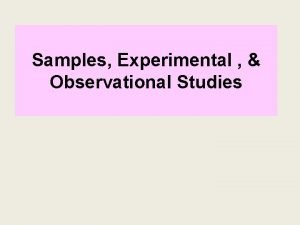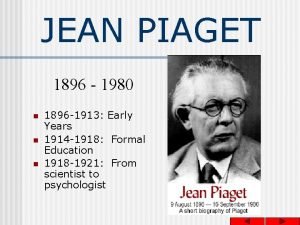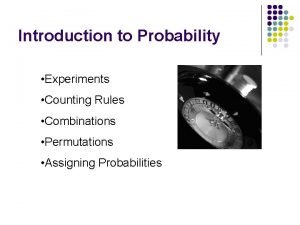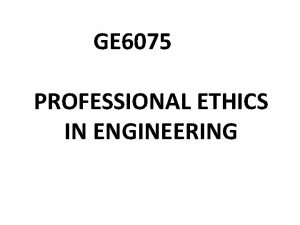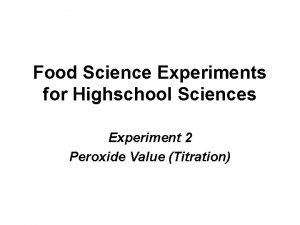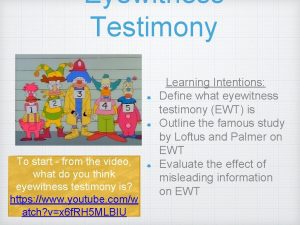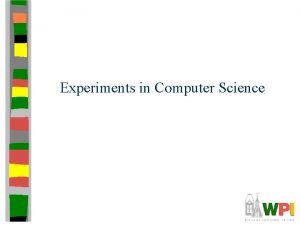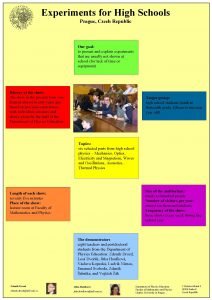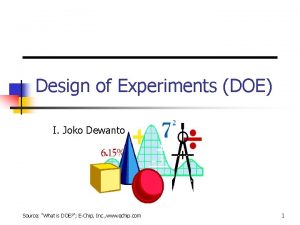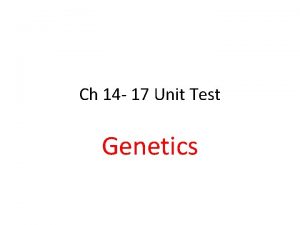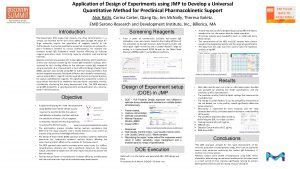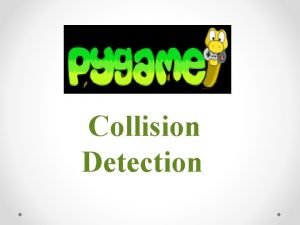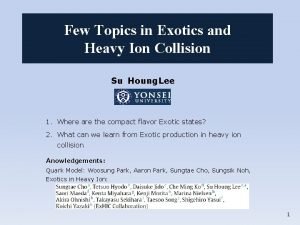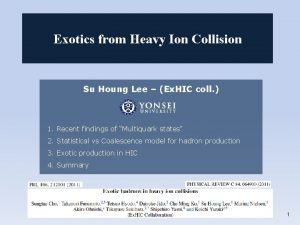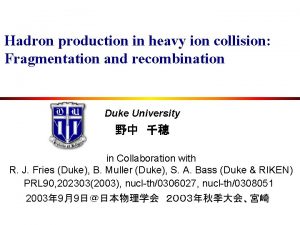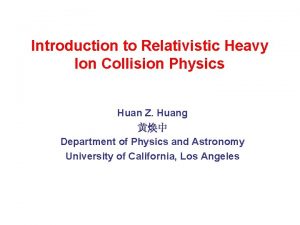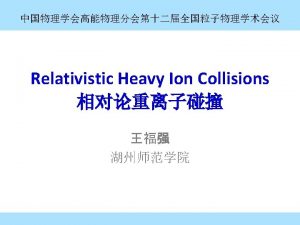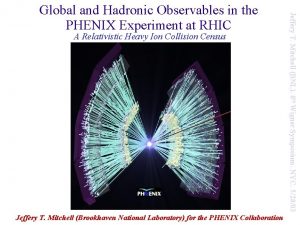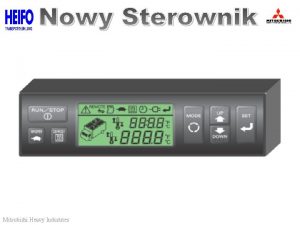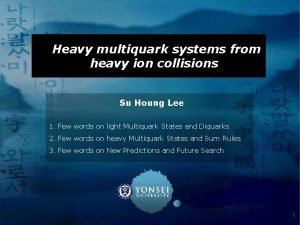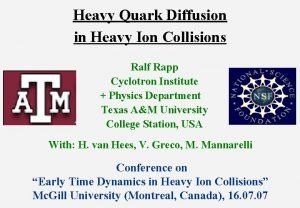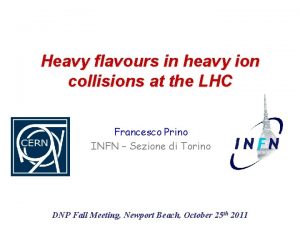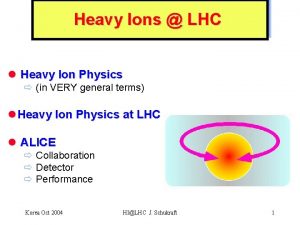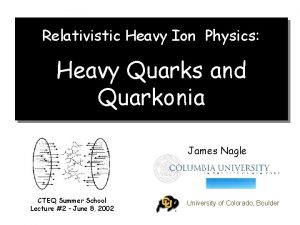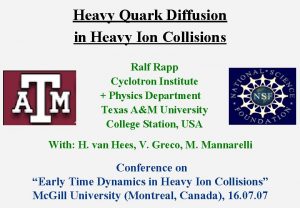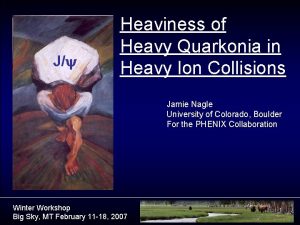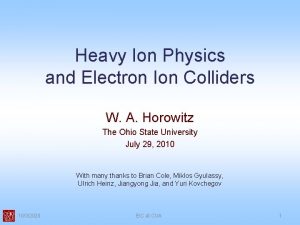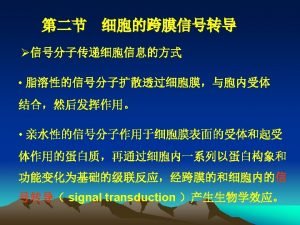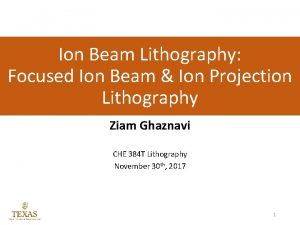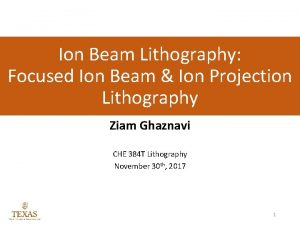Heavy Ion Collision Experiments Data Analysis Tutorial for





























































































![Prologue Experiment Outlook Resonance Reconstruction minv = [(E 1+E 2)2 -(p 1+p 2)2]1/2 • Prologue Experiment Outlook Resonance Reconstruction minv = [(E 1+E 2)2 -(p 1+p 2)2]1/2 •](https://slidetodoc.com/presentation_image_h2/530ee5f90f256b6b1cee45e86f56bdfd/image-94.jpg)

- Slides: 95

Heavy Ion Collision Experiments & Data Analysis Tutorial for Heavy Ion Experiment In-Kwon Yoo Pusan National University

Outline 1. 2. 3. 4. 5. 6. Collision Experiment Accelerators Detectors Electronics Data Acquisitions Data Analysis 2021 -06 -03 HIM 2010 -02 2

1. Collision Experiments since Rutherford • Why High Energy Collisions? – Resolution – Massive Particle Production – Extreme Conditions (Phase Transition) • What to collide? – – 2021 -06 -03 T(Me. V) Early Universe (RHIC) Electron Hadron (Pion, Kaon, Proton) Hadron Gas Heavy Ions Atomic Nuclei Radioactive Isotope ~150 HIM 2010 -02 Quark-Gluon Plasma Phase Transition Color Superconductor Neutron Star ~10 Density(n 0) 3

Collision Energies Collision System : Center of Mass Energy s 1/2 In Target Experiment : In Collider Experiment : Possible heaviest producible particle : 2021 -06 -03 HIM 2010 -02 4

1. Collision Experiments since Rutherford • How to collide? – Fixed Target Experiment – Collider Experiment Fixed Target Collider Energy inefficient X section efficient inefficient Detector Large acceptance for designed collision system Effective acceptance for variable collision system 2021 -06 -03 HIM 2010 -02 5

2. Accelerators • What to accelerate : charged particle only – Source : • How to accelerate : Electric Field – Electrostatic Accelerator – Radio-Frequency Accelerator : • What shape – Linear Accelerator – Cyclotron – Synchrotron 2021 -06 -03 HIM 2010 -02 6

Electrostatic Accelerators • Cockcraft-Walton 2021 -06 -03 HIM 2010 -02 7

• Van de Graaff 2021 -06 -03 HIM 2010 -02 8

• Tandem Van de Graaff 2021 -06 -03 HIM 2010 -02 9

Radio-frequency LINAC 2021 -06 -03 HIM 2010 -02 10

Cyclotron http: //www. phy. ntnu. edu. tw/java/cyclotron. html qv. B = mv 2/r ; r = mv/q. B f = v/2 pr = q. B/2 pm ; 2021 -06 -03 HIM 2010 -02 11

CERN European Organization for Nuclear Research Complex 2021 -06 -03 HIM 2010 -02 12

BNL Brookhaven National Lab. Complex 2021 -06 -03 HIM 2010 -02 13

• C. Y. Wong : Introduction to High-Energy Heavy-Ion Collisions : P 1 An Example Pb+Pb@160 AGe. V • Geometry : - r. Pb = 1. 2 fm A 1/3 = 7. 1 fm - r. T = 7. 1 fm, rll = 7. 1 fm/g = 0. 76 fm - ECMS = s 1/2 = 17. 4 AGe. V - bg = pc/m 0 c 2 ~ 8. 7 Ge. V/0. 938 = 9. 38 - Etot, CMS = 208. 17. 4 =3619 Ge. V - Volume = Vol/g =159. 75 fm 3 - Energy Density = e = 22. 6 Ge. V/fm 3 - Normal energy density in nucleus ~ 208 Ge. V/4. 7. 13 ~ 0. 14 Ge. V/fm 3 2021 -06 -03 HIM 2010 -02 14

• C. Y. Wong : Introduction to High-Energy Heavy-Ion Collisions : P 1 An Example : continued Pb+Pb@160 AGe. V • Geometry : - Energy Density = e = 22. 6 Ge. V/fm 3 incl. 2 Pb rest-Energy - Normal energy density in nucleus ~ 0. 14 Ge. V/fm 3 - Etot / ET = 4/p - Emax = 208. 17. 4 Ge. V – 2. 208. 0. 938 Ge. V = 3. 22 Te. V - ET, max = p/4. 3. 22 Te. V = 2. 53 Te. V - Stopping power ~ 57% Converted Energy in Pb. Pb @ 160 Ge. V ~ 1. 46 Te. V 2021 -06 -03 HIM 2010 -02 15

• C. Y. Wong : Introduction to High-Energy Heavy-Ion Collisions : P 1 An Example : continued • Deposit Energy Density • Differential Calculation (Bjorken Formula) Measurable 2021 -06 -03 HIM 2010 -02 16

• C. Y. Wong : Introduction to High-Energy Heavy-Ion Collisions : P 1 An Example : continued • Energy-Density meaning - Compare to proton - r(r) = r 0 e-ar , a = 4. 27 fm-1 - 2021 -06 -03 HIM 2010 -02 17

3. Detector System for HEP • What to do for the ‘detection’ ? -Particle Detection (any signal) -Energy deposit necessary for any signal -Momentum determination (kinematics) -Identification with physical properties • Detection of particles -Charged particles : -Neutral particles : 2021 -06 -03 HIM 2010 -02 18

Modern Detector System 2021 -06 -03 HIM 2010 -02 19

Emulsion plate Image 3. 1 Tracking detector • ‘visual’ detector -Emulsion detector -Bubble chamber -Spark chamber -Streamer chamber Bubble chamber and its image 2021 -06 -03 HIM 2010 -02 20

Spark chamber and its image 3. 1 Tracking detector • ‘visual’ detector -Emulsion detector -Bubble chamber -Spark chamber -Streamer chamber Streamer Chamber 2021 -06 -03 HIM 2010 -02 21

• ‘electronic’ detector -Time Projection chamber (TPC) -Semiconductor detector -Scintillation detector 2021 -06 -03 HIM 2010 -02 22

• TPC • Drift velocity vs. Electric field strength • Drift velocity vs. Gas mixture • Ionization potential vs. Gas mixture 2021 -06 -03 HIM 2010 -02 23

3. 2 Energy loss d. E/dx of charged particle in matter • Bethe-Bloch Function : d. E/dx = q 2 f(v) = q 2 g(bg) • bg = pc/m 0 c 2 d. E/dx = q 2 h(p) • Energy loss && momentum measurement • Minimal ionization d. E/d(rx) ~ 2 Me. V/gcm 2 : MIP When a minimal ionization particle goes through 5 cm long Ar-gas chamber (ionization energy = 26 e. V, r = 1. 8 g/cm 3), how many electronion pairs will be produced ? 2021 -06 -03 HIM 2010 -02 24

2021 -06 -03 HIM 2010 -02 25

2. 2 Particle Identification • Parameterization : d. Edx vs. log(p) • Slicing w. r. t p Filling TH 1 F (d. Edx) • root/01 I/param/macro/dedx_p_01 Ixx. C 2021 -06 -03 HIM 2010 -02 26

2. 2 Particle Identification 2021 -06 -03 HIM 2010 -02 27

2. 2 Particle Identification 2021 -06 -03 HIM 2010 -02 28

2. 2 Particle Identification 2021 -06 -03 HIM 2010 -02 29

2. 2 Particle Identification 2021 -06 -03 HIM 2010 -02 30

3. 3 Time-Of-Flight Measurement • With known Track (length) + Time-Of-Flight Measurement determine b • Error in 1/b • Plastic Scintillator / RPC σt ~ 100 ps 2021 -06 -03 HIM 2010 -02 31

3. 3 Time-Of-Flight Measurement • (m 0 c 2)2 = (pc)2(1 -b 2)/b 2 : mass determination • Error in (m 0 c 2)2 2021 -06 -03 HIM 2010 -02 32

3. 2 Particle Identification • Decomposition : Proton-Kaon-Pion. Electron-peaks - 4 gaussian with 12 parameters - In function of p - Difficult to separate K-p - TOF Information needed • d. Edx-m 2 Histogram - Separation of K-p - For limited p <10 Ge. V - Fix d. Edx_K, d. Edx_p for the limited p - d. Edx vs. p/m = bg - Fit with Bethe-Bloch 2021 -06 -03 HIM 2010 -02 33

Particle Identification at STAR 2021 -06 -03 HIM 2010 -02

Where we are & will go Detector System Electric Signals Data Analysis Physics Analysis Ev / Track Selection Data Reconstruction HIM 2010 -02 Data Acquisition Central Acquisition Trigger System Off-line Event Builder TDC / QDC 2021 -06 -03 Amplifying / Discrimination Time-Of-Flight Tracking Beam On/Off HV / LV system Signal Processing Digital Data

4. Typical electronics setup for HEP experiment 신호의 크기를 조절하는 것이 아니라 Charge를 Vlotage로 변환하는 기능을 담당한다. (우리의 AMP와는 다른 것) Detestor에 반드시 Voltage Supply를 걸어주어야 함 여기서 Logic은 NIM, TTL, ECL을 통칭함 06/28/2009 2021 -06 -03 핵물리학교 2009 HIM 2010 -02 36

Introduction Signal Processing • Fast vs. Slow 06/28/2009 37 2021 -06 -03 핵물리학교 2009 HIM 2010 -02 Converter • Analog vs. Digital Logic Units Cables Modules BUS System POWER Control RACK • Pulse Signal

2. The NIM Standard • NIM bin : Power Supply to each module : -24, -12, -6, -3, 0, +3, +6, +12, +24 V 06/28/2009 38 2021 -06 -03 핵물리학교 2009 HIM 2010 -02

Logic Signals • • NIM, TTL, ECL Logic Signals Slow / Fast Logic Signals Positive / Negative Signals Noise immunity / no loss of bandwidth / minimize ground loop • Twisted pair cable / flat ribbon cable • Converter needed slow pos. NIM fast neg. NIM TTL ECL Yes, 1 +3 ~ +12 V -0. 7 ~ -0. 9 V 2 ~ 5 V -1. 75 V No, 0 +1 ~ - 2 V +0. 05 ~ - 0. 05 V 0 ~ 0. 8 V -0. 9 V 06/28/2009 39 2021 -06 -03 핵물리학교 2009 HIM 2010 -02

3. Signal Transmission Commonly used Coaxial cables and Characteristics NAME RG-58/U RG-58 C/U RG-174/U RG-62/U RG-59/U Z (impedance) 50 Ohm 93 Ohm 73 - 75 Ohm Delay (ns/m) 5. 14 / 5. 06 5. 14 4. 0 5. 14 Diameter (cm) 0. 307 / 0. 295 0. 152 0. 635 0. 381 Capacitance (p. F/m) 93. 5 98. 4 44. 3 68. 9 – 67. 3 Max. op. Voltage (k. V) 1. 9 1. 5 0. 75 2. 3 Use Fast Signal Trans. Slow Signal Trans. HV power BNC Lemo BNC HV Single and double braided, high temperature use etc. 06/28/2009 40 2021 -06 -03 핵물리학교 2009 HIM 2010 -02

3. Signal Transmission • Coaxial Cable : • • • two concentric cylindrical conductors signal / ground electromagnetic shielding self-capacitance and inductance ideal lossless cable 06/28/2009 41 2021 -06 -03 핵물리학교 2009 HIM 2010 -02

3. Signal Transmission • Coaxial Cable : self-capacitance and inductance 06/28/2009 42 2021 -06 -03 핵물리학교 2009 HIM 2010 -02

3. Signal Transmission Ideal lossless cable : 06/28/2009 43 2021 -06 -03 핵물리학교 2009 HIM 2010 -02

3. Signal Transmission • Ideal lossless cable : • for an input signal of • solution : • with • signal propagation : • delay ~ 5 ns/m • characteristic impedance : 06/28/2009 44 2021 -06 -03 핵물리학교 2009 HIM 2010 -02

3. Signal Transmission • Impedance Matching - Z 1 < Z 2 1/Z 1 = 1/R + 1/Z 2 R = Z 1 Z 2/(Z 2 -Z 1) - Z 1 > Z 2 Z 1 = Z 2 + R R = Z 1 - Z 2 06/28/2009 45 2021 -06 -03 핵물리학교 2009 HIM 2010 -02

4. Electronics for Pulse Signal Processing • Preamplifier (PA) • Scaler • Amplifier (AMP) • Coincidence Units • Pulse Shaping • Biased Amplifier (BA) • Pulse Stretcher (PS) • Linear Gate (LG) • Delay (DELAY) • Discriminator (DISCR. ) • Single Channel Analyzer (SCA) • Analog-to-Digital Converter (ADC) • Multichannel Analyzer (MCA) • Time-to-Amplitude Converters (TAC) 06/28/2009 46 2021 -06 -03 핵물리학교 2009 HIM 2010 -02

4. Electronics for Pulse Signal Processing Preamplifier 06/28/2009 47 2021 -06 -03 핵물리학교 2009 HIM 2010 -02


4. Electronics for Pulse Signal Processing BA SCA Pulse Stretcher TAC Discriminator COIN 06/28/2009 49 2021 -06 -03 핵물리학교 2009 HIM 2010 -02

5. Pulse Height Selection and Coincidence Techniques • A Simple Counting System DET PA AMP DISC. SCALER HV • A Simple Counting System for pulse height selection DET PA AMP SCA HV 06/28/2009 50 2021 -06 -03 핵물리학교 2009 HIM 2010 -02 SCALER

5. Pulse Height Selection and Coincidence Techniques • Basic Coincidence Technique HV DET PA AMP DISC. DELAY COIN DET PA AMP DISC. HV IN 1 IN 2 OUT 06/28/2009 51 2021 -06 -03 핵물리학교 2009 HIM 2010 -02 DELAY SCAL ER

5. Pulse Height Selection and Coincidence Techniques • Pulse Shape Discrimination (PSD) 06/28/2009 52 2021 -06 -03 핵물리학교 2009 HIM 2010 -02

5. Pulse Height Selection and Coincidence Techniques • Pulse Shape Discrimination (PSD) 06/28/2009 53 2021 -06 -03 핵물리학교 2009 HIM 2010 -02

6. Electronic Logic for Experiments • One-Body Scattering 06/28/2009 54 2021 -06 -03 • Two-Body Scattering 핵물리학교 2009 HIM 2010 -02

6. Electronic Logic for Experiments • Measurement of the Muon Lifetime 06/28/2009 55 2021 -06 -03 핵물리학교 2009 HIM 2010 -02

7. Timing Methods and Systems WALK JITTER Zero-crossing 06/28/2009 56 2021 -06 -03 핵물리학교 2009 HIM 2010 -02 Constant fraction Discriminator

7. Timing Methods and Systems Calibration the Timing System 06/28/2009 57 2021 -06 -03 핵물리학교 2009 HIM 2010 -02


Data Ac. Quisition System 데이터 수집 장치 06/28/2009 59 2021 -06 -03 핵물리학교 2009 HIM 2010 -02


암흑물질탐색연구단의 flash ADC DAQ VME USB 2 -VME controller의 신호모습(~24 MB/s전송) 06/28/2009 2021 -06 -03 핵물리학교 2009 HIM 2010 -02 61

8. Compute Automated Measurement And Control System Computer Controlled Electronics 06/28/2009 62 2021 -06 -03 핵물리학교 2009 HIM 2010 -02


8. CAMAC System N L 06/28/2009 64 2021 -06 -03 핵물리학교 2009 HIM 2010 -02







int main(void) { unsigned long data; 데이터 레지스터를 읽어라는 명령어 data = CAMAC(5, 0, 0); data = CAMAC(5, 0, 9); // read latch register // clear latch register 클리어 하라는 명령 return 0; } unsigned long CAMAC(int N, int A, int F) { unsigned long addr, data; addr = (N << 11) | (A << 7) | (F <<2); data = VMEread(A 32 D 32, 10, addr); // VME명령어 이다. return data; 06/28/2009 71 }2021 -06 -03 핵물리학교 2009 HIM 2010 -02 71

HIPEx CAMAC DAQ System • TOYO / CAEN Controller • setup -> Station, Channel number • call run_daq. c -> save to ASCII • call d 2 root. c macro -> convert to a root file • online monitoring of DAQ -> current entry 06/28/2009 72 2021 -06 -03 핵물리학교 2009 HIM 2010 -02


NIM -> TTL converter 06/28/2009 74 2021 -06 -03 핵물리학교 2009 HIM 2010 -02

TTL -> NIM converter 06/28/2009 75 2021 -06 -03 핵물리학교 2009 HIM 2010 -02

9. Versa Module Eurocard DAQ System 06/28/2009 76 2021 -06 -03 핵물리학교 2009 HIM 2010 -02

HIPEx VME DAQ System • Notice (주) Controller 8 channel x 8 mod. • Amp - Shaper - FADC 100 MHz 일체형 • Setup -> Station, Channel number • call run_daq. c -> save to ASCII / Pulse shape • call a macro to convert to QDC value 06/28/2009 77 2021 -06 -03 핵물리학교 2009 HIM 2010 -02

100 ns 10 ns VME 2021 -06 -03 Oscilloscope HIM 2010 -02 78

9. 2 us VME 2021 -06 -03 Oscilloscope HIM 2010 -02 79

2021 -06 -03 HIM 2010 -02 80

6. Data Analysis Practice / Researches 1. 2. 3. 4. 5. Data Handling 1. 2. Working Scheme Macro & Data Structure 1. 2. d. E/dx PID TOF PID 1. Kaons in p. T, y (CWSon), Protons (HSCho) 1. 2. 3. f K+K- (EJLee) L 1520 p. K- (YMKim) K* Kp (KSOh) 1. Charge Transfer Fluctuation Particle Identification Single Particle Production Resonance Reconstruction Recent Topics 2021 -06 -03 HIM 2010 -02 81

6. 1 Data Handling • Experimental Data Handling - RAW Data on Storage DAQ - DSTs : Reconstructed Data Set - Analysis Tools (Database Analysis Tools) + Physics Analysis Workstation (PAW) : based on Fortran » Ntuples : Track Informations with Event Number » iev, px, py, pz, … » Histograms, Functions, Graphs, Pictures + ROOT : C++ Interpreter » Trees ~ Ntuples mini. DSTs, m. DSTs, . . • Simulations - Geometrical / Detector Efficiency - Reconstruction Efficiency 2021 -06 -03 HIM 2010 -02 82

6. 1 Data Handling • ROOT - ROOT : An Object Oriented Data Analysis Framework http: //root. cern. ch - developed by Rene Brun & Fons Rademakers (CERN) - Tutorials (Demos) • ROOT 49 / Root 4 Star / cbmroot - Own predefined Classes - Own Analysis Tools - DST Interface Classes - Example Macros : • Batch Farm - Sequential jobs for every data file - parallel/cluster computing with hundreds of CPUs 2021 -06 -03 HIM 2010 -02 83

Working Scheme • Old Style (SPS etc. ) – Data Production on dedicated computing farm – Macro test on local machine – Job submission onto computing farm • Enhanced Style (RHIC) – Data Production on distributed system – Local access and Job submission onto distributed system • Newest Style (LHC) – Tier Structure – GRID computing : computing over world somewhere 2021 -06 -03 HIM 2010 -02 84

6. 1. 1 Working Scheme • Flowchart Script for bsub of the jobs CERN LINUX Farm Shell script 2 Shell script 1 Macro. C (1, 4) Shell script 2 Shell script 3 Macro. C (5, 8) Programming Local computer 2021 -06 -03 run 1 out 1 run 2 out 2 run 3 out 3 run 4 out 4 run 5 out 5 run 6 out 6 run 7 out 7 run 8 out 8 Summatio n& Results HIM 2010 -02 85

LHC Computing Model Lab m Uni x Uni a CERN Tier 1 HI? ? UK USA Tier 3 physics department Tier 2 Italy Desktop γ α Uni n CERN Tier 0 ………. Lab b β 86 France Tier 1 ………. Germany Lab c Uni y Uni b

LHC Computing Grid 87 In-Kwon YOO Yonsei Colloquium 2009 -06 -03

6. 3 Simulations • Particle Production in (y, p. T, f)-bin - PID Particle Selection - p. T (m. T = sqrt(m 02+p. T 2) ) -Distribution - Rapidity-Distribution - Correction Simulation • Simulation Environment – brief version 2021 -06 -03 HIM 2010 -02 88

6. 3 Simulations • Simulation Input : Event Generator (e. g. simple from known distributions, VENUS, Ur. QMD, FRITIOF etc. ) • GEANT : the transport of particles through a detector apparatus e. g. NA 49 GNA 49 - The event is defined by a list of particles at the target vertex and their initial momentum vectors. Interactions with detector material, decays of unstable particles, and the production of secondary particles are all accounted for by Monte Carlo techniques. The NA 49 GEANT (GNA 49) models nearly every component of the NA 49 apparatus. The magnetic field is based on the same map used by the reconstruction software. • MTSIM : The TPC simulation program, MTSIM, reads in the GNA 49 output and creates data in the form of digitized output of the TPC electronics. 2021 -06 -03 HIM 2010 -02 89

6. 3 Simulations • (Embedding) : A simulated event can be superimposed on an actual experimental event with GTEMBED. This provides a realistic background so that the embedded event appears to the reconstruction software as being practially identical to the experimental data. The process of track embedding requires adding ADC signals in each pad-timeslice pixel from both data sets. • Reconstruction : It is operated in a manner identical to that of the experimental event reconstruction and the performance of the reconstruction program should be the same in both cases. • Matching : The reconstructed data, in the form of TPC points and tracks, are compared to the GEANT MC data with an evaluation tool called GTEVAL. The user can then examine the simulation results to determine which of the originally generated MC particles were actually reconstructed. The matching procedure starts with point matching, which is based on the spatial proximity of the GNA 49 point to the reconstructed point. Then the track information associated with each point is compiled to make a list of possible matches between tracks. Specialized data arrays are used by GTEVAL to record the point and track matches, which may not necessarily be one-to-one. 2021 -06 -03 HIM 2010 -02 90

• ~yoo/root/VENUS/sim/ : simple (physics. off) example 2. 3 Single Particle Spectrum - generate_kstar. C ROOT macro : generates particles with variables (px, py, pz) data/xx. d (real data ASCII file) data/xx. root (just for review of the distributions) - sim_kstar script for running GEANT data/xx. d (ASCII data) Setup_. . . Script : GEANT Env. Creating link etc. Set_keys… script : definitions of keys *. gcards : Definitions of GEANT variables /castor/. . /xx. ds (RAW data) - rec_kstar mtsim, reconstruction from xx. ds /castor/. . /xx. ds Setup script : predefinitions, keys etc. Padxx : TPC pad conditions /castor/. . /rec_xx. ds (reconstructed RAW data) - copy_MC. C : mini DST /castor/. . /rec_xx. ds 2021 -06 -03 /castor/. . /rec_xx. root HIM 2010 -02 91

6. 4 (An Example) Resonance Production 1. PID Particle Selection for each Event 2. Combination of (possible) daughter particle-pairs in the given Event 1. Other Physical Conditions : Decay Angle, Vertices etc. 2. minv = [(E 1+E 2)2 -(p 1+p 2)2]1/2 3. Ei = sqrt(m 02 + p 2) 3. Background Construction 1. (surely) uncorrelated pairs 2. Particle 1 Event 1 & Particle 2 Event 2 3. Normalization : Background Shape 4. Phase Space Dependency 1. y- / pt- bins 2. Multiplicity Distributions 3. Corrections Corrected Yields 2021 -06 -03 HIM 2010 -02 92

6. 4 Particle Identification • Save Bethe-Bloch parameter • Save Sigma • Use the parameters for cuts. • Example for f K+K- 2021 -06 -03 HIM 2010 -02 93
![Prologue Experiment Outlook Resonance Reconstruction minv E 1E 22 p 1p 2212 Prologue Experiment Outlook Resonance Reconstruction minv = [(E 1+E 2)2 -(p 1+p 2)2]1/2 •](https://slidetodoc.com/presentation_image_h2/530ee5f90f256b6b1cee45e86f56bdfd/image-94.jpg)
Prologue Experiment Outlook Resonance Reconstruction minv = [(E 1+E 2)2 -(p 1+p 2)2]1/2 • Identify secondary vertices • Examples in Pb+Pb@158 AGe. V 2021 -06 -03 HIM 2010 -02 94

Conclusion • • Nothing simple! Many uncertainty sources Understanding Errors Reduction of Error range • Better Experimental Ideas / Techniques • Specialize! 2021 -06 -03 HIM 2010 -02 95
 What does ratey stand for
What does ratey stand for Heavy ion
Heavy ion C6h12 fuerza intermolecular
C6h12 fuerza intermolecular Qumica
Qumica Dipolos instantaneos
Dipolos instantaneos London dispersion forces
London dispersion forces Nn torrent
Nn torrent Microarray data analysis tutorial
Microarray data analysis tutorial Kontinuitetshantering
Kontinuitetshantering Novell typiska drag
Novell typiska drag Nationell inriktning för artificiell intelligens
Nationell inriktning för artificiell intelligens Ekologiskt fotavtryck
Ekologiskt fotavtryck Shingelfrisyren
Shingelfrisyren En lathund för arbete med kontinuitetshantering
En lathund för arbete med kontinuitetshantering Adressändring ideell förening
Adressändring ideell förening Personlig tidbok
Personlig tidbok A gastrica
A gastrica Vad är densitet
Vad är densitet Datorkunskap för nybörjare
Datorkunskap för nybörjare Tack för att ni lyssnade bild
Tack för att ni lyssnade bild Hur skriver man en debattartikel
Hur skriver man en debattartikel För och nackdelar med firo
För och nackdelar med firo Nyckelkompetenser för livslångt lärande
Nyckelkompetenser för livslångt lärande Påbyggnader för flakfordon
Påbyggnader för flakfordon Vätsketryck formel
Vätsketryck formel Publik sektor
Publik sektor Urban torhamn
Urban torhamn Presentera för publik crossboss
Presentera för publik crossboss Argument för teckenspråk som minoritetsspråk
Argument för teckenspråk som minoritetsspråk Bat mitza
Bat mitza Klassificeringsstruktur för kommunala verksamheter
Klassificeringsstruktur för kommunala verksamheter Epiteltyper
Epiteltyper Claes martinsson
Claes martinsson Centrum för kunskap och säkerhet
Centrum för kunskap och säkerhet Programskede byggprocessen
Programskede byggprocessen Bra mat för unga idrottare
Bra mat för unga idrottare Verktyg för automatisering av utbetalningar
Verktyg för automatisering av utbetalningar Rutin för avvikelsehantering
Rutin för avvikelsehantering Smärtskolan kunskap för livet
Smärtskolan kunskap för livet Ministerstyre för och nackdelar
Ministerstyre för och nackdelar Tack för att ni har lyssnat
Tack för att ni har lyssnat Mall för referat
Mall för referat Redogör för vad psykologi är
Redogör för vad psykologi är Stål för stötfångarsystem
Stål för stötfångarsystem Tack för att ni har lyssnat
Tack för att ni har lyssnat Borra hål för knoppar
Borra hål för knoppar Vilken grundregel finns det för tronföljden i sverige?
Vilken grundregel finns det för tronföljden i sverige? Stickprovsvarians
Stickprovsvarians Tack för att ni har lyssnat
Tack för att ni har lyssnat Rita perspektiv
Rita perspektiv Informationskartläggning
Informationskartläggning Tobinskatten för och nackdelar
Tobinskatten för och nackdelar Toppslätskivling dos
Toppslätskivling dos Datumr
Datumr Egg för emanuel
Egg för emanuel Elektronik för barn
Elektronik för barn Antikt plagg
Antikt plagg Strategi för svensk viltförvaltning
Strategi för svensk viltförvaltning Var 1721 för stormaktssverige
Var 1721 för stormaktssverige Ellika andolf
Ellika andolf Ro i rom pax
Ro i rom pax Tack för att ni lyssnade
Tack för att ni lyssnade Vilket tal pekar pilen på
Vilket tal pekar pilen på Dikter som rimmar
Dikter som rimmar Inköpsprocessen steg för steg
Inköpsprocessen steg för steg Rbk fuktmätning
Rbk fuktmätning Etik och ledarskap etisk kod för chefer
Etik och ledarskap etisk kod för chefer Cellorov
Cellorov Myndigheten för delaktighet
Myndigheten för delaktighet Trög för kemist
Trög för kemist Tillitsbaserad ledning
Tillitsbaserad ledning Läkarutlåtande för livränta
Läkarutlåtande för livränta Karttecken stig
Karttecken stig Gumman cirkel sång
Gumman cirkel sång Vishnuiter
Vishnuiter Var finns arvsanlagen
Var finns arvsanlagen Bris för vuxna
Bris för vuxna Big brother rösta
Big brother rösta![[http://earthobservatory.nasa.gov/experiments/biome/] [http://earthobservatory.nasa.gov/experiments/biome/]](data:image/svg+xml,%3Csvg%20xmlns=%22http://www.w3.org/2000/svg%22%20viewBox=%220%200%20200%20200%22%3E%3C/svg%3E) [http://earthobservatory.nasa.gov/experiments/biome/]
[http://earthobservatory.nasa.gov/experiments/biome/] M&m experiments with scientific method
M&m experiments with scientific method Observational study examples statistics
Observational study examples statistics 1980-1896
1980-1896 Counting rule for multiple-step experiment
Counting rule for multiple-step experiment A balanced outlook on law
A balanced outlook on law Science experiments for highschool
Science experiments for highschool Eyewitness testimony video experiments
Eyewitness testimony video experiments Computer science experiments
Computer science experiments Czech experiments
Czech experiments Dna molecule diagram
Dna molecule diagram Design of experiments doe
Design of experiments doe In his transformation experiments what did griffith observe
In his transformation experiments what did griffith observe Which three criteria do binomial experiments meet?
Which three criteria do binomial experiments meet? Jmp factorial design
Jmp factorial design What are surveys experiments or observations
What are surveys experiments or observations Examples of binomial experiments
Examples of binomial experiments Computer organization lab experiments
Computer organization lab experiments

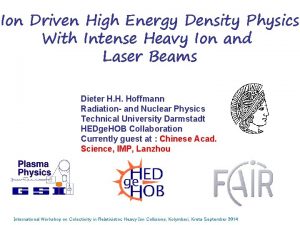




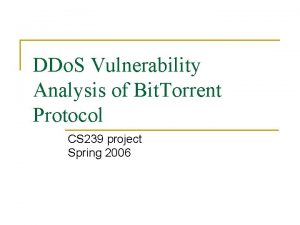
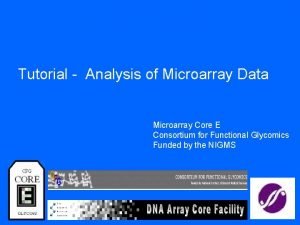






































































![[http://earthobservatory.nasa.gov/experiments/biome/] [http://earthobservatory.nasa.gov/experiments/biome/]](https://slidetodoc.com/wp-content/uploads/2020/11/1537165_35fb5ecc588217ed14768e866616d64b-300x169.jpg)

